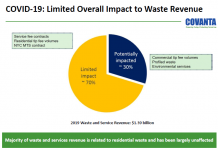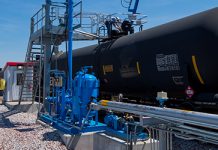There’s much excitement about second generation biofuels made from cellulosic feedstocks and algae, be they cellulosic ethanol, biodiesel, biocrude, or electricity from biomass. There will be winners, but they may not be the technology companies.
Tom Konrad, Ph.D., CFA
At the 2009 Advanced Biofuels Workshop, there were two major themes: developing new feedstocks, especially algae, and the development of new pathways to take biomass into products such as biocrude, which can be used in exiting oil refineries.
Big Market, Many Competitors
The current federal Renewable Fuel Standard requires the use of 36 million gallons of biofuels, including at least 21 billion gallons of advanced biofuels by 2022. Advanced biofuels are defined as fuels other than corn-based ethanol and with greenhouse gas (GHG) emissions half that of the fuel they replace. This creates a gigantic market, so large that some industry observers doubt if it can be met.
Many of these fuels will not be ethanol, a fuel which poses problems with the current fuel transport and distribution infrastructure. Even for cellulosic ethanol, there are several different processes that different companies are pursuing: Acid hydrolysis, Thermochemical conversion, Biochemical conversion, and Consolidated Bioprocessing, and combinations of these three used in various combinations by various companies.
Potential products not only include fuels such as ethanol, butanol and higher-carbon alcohols, but biocrude which can be fed into existing refineries. Other potential products include plastics, and many other products currently produced by the petroleum based energy industry.
The bewildering array of potential pathways and products make for a very challenging investment landscape. An investor in any company would need a lot of confidence that the company they are investing in will be able to take their chosen feedstocks to a potential salable product at lower cost than all the competitors out there. Unsurprisingly, nearly every company feels it has the best process.
Lessons From the First Generation
With so many variables, I find it’s often better to take a step back to see what impact the development of the advanced biofuels market will have on the larger economy. Will there be impacts on the broader economy which will be independent of the eventual mix of products and processes in the advanced biofuels market?
We can learn from the experience of first generation biofuels.
Below is a chart from William Thurmond, President of Emerging Markets Online and author of Algae 2020: Biofuels Commercialization Outlook, and Biodiesel 2020: A Global Market Survey:
It shows how biodiesel feedstocks (Palm oil, rapeseed oil, and soybean oil) are increasingly following diesel prices. There is a massive overcapacity for biodiesel production in the EU, as shown in the shown in the following graph, also from Thurmond:
With this excess capacity, if biodiesel feedstock prices were to fall relative to diesel prices, biodiesel producers would purchase feedstock either until they fill their excess capacity, or until feedstock prices rise again to a point where it is no longer profitable to run additional biodiesel capacity. Put another way, biodiesel producers cannot be more than marginally profitable (and may be unprofitable) so long as there is significant excess capacity. Excess capacity can only be filled if additional feedstock can be found, or plants permanently shut down.
What does this mean for advanced biofuels? As advanced biofuel technologies advance, feedstocks prices are likely to rise.
Why Advanced Biofuels are Different
Unlike with biodiesel and starch based ethanol, many second generation feedstocks are not generally internationally traded; many are actually waste streams from other processes, such as yellow and brown grease (the restaurant industry), corn stover, forest trimmings (the lumber industry,) and even municipal waste. The more that these feedstocks are internationally traded and easy to transport (such as yellow and brown grease), the more likely they are to follow the patterns seen in the feedstocks for first generation biofuels. According to Thurmond, this has already happened with yellow grease, and the rise in price was a surprise to most biodiesel industry participants.
Many emerging biofuels companies have learned this lesson. ZeaChem’s strategy specifically includes setting up a long term contract to purchase feedstock from dedicated energy plantations because "the availability of sustainable, cost effective raw materials is essential for an economically viable cellulosic biofuel facility," according to Andy Vietor, ZeaChem’s CFO, who spoke at the workshop. BioFuelBox Corporation is tackling the same problem from a different direction: by developing a biorefinery that they expect can produce biodiesel from a zero-cost waste stream (trap grease), but I’m not sure that they have completely absorbed the lesson. Even trap grease will acquire some value if they can consistently make fuel from it. I think they could improve their business model by selling their technology as a turnkey solution to the waste stream owner.
Investments and the "Everything vs. Fuel" debate
Investors who expect advanced biofuels to be successful should pay close attention to feedstocks. Just as supply constraints for batteries will shape the electric and hybrid electric auto market, limited supplies of biomass will shape the advance biofuels industry.
If an advanced biofuel company expects to make biofuel from an easily shippable commodity, such as wood chips, they’d be advised to stay away, unless that company also plans to contract for their supply of feedstock well ahead of time, and such agreements will probably constrain a company’s ability to react to changing conditions. Lack of flexibility can be fatal to start-up companies.
Companies which produce easily transportable feedstocks being considered by advanced biofuel companies stand to benefit from new markets for their products. These include forestry companies (wood chips), waste management companies, and most owners of arable or marginal land. Wood chips are likely to see price escalation even without the advent of advanced biofuels based on them. Wood chips and pellets can be cofired in many existing coal power plants with only relatively inexpensive modifications, a process which offsets large amounts of carbon emissions at very low cost. Biomass cofiring was the cheapest renewable energy opportunity identified in California’s RETI study last year. For an apples-to-apples comparison, the greater efficiency of electric motors means that electricity produced from biomass can propel an electric vehicle 81% farther than an otherwise comparable ethanol-fueled vehicle running on cellulosic ethanol produced from the same amount of biomass.
Furthermore, the existing biofuel industry may also find better uses for cellulosic feedstocks than turning them into biofuels. I attended a session at the 2009 Fuel Ethanol Workshop the following day where gasification of cellulosic waste streams such as corn cobs or stover was presented as an economical way to reduce the carbon footprint of corn ethanol by displacing natural gas used in the production process.
The flip side of the feedstock equation is that industries which compete for feedstock with the biofuels industry are likely to be hurt by rising prices. Advanced Biofuels may resolve the "Food vs. Fuel" debate, but they will be doing so by, at least in part, replacing it with a new "Everything vs. Fuel" debate. For instance, the paper industry (especially those companies which do not own forestry assets) will likely be hurt by rising pulp prices, like Mexicans who found they could not buy tortillas. Recycled paper pulp is an excellent cellulosic feedstock as well. On the other hand, businesses which produce or collect paper waste may find more robust markets for their products.
This line of reasoning might also give you pause if you’re considering warming your home with a wood pellet stove. The advent of biofuels from wood chips will mean that the price of your wood pellets will start to track the price of petroleum, just like the price of vegetable oils are already doing. From an economic perspective, heating with wood pellets may become not much different than using heating oil. We saw the start of this trend last year with wood pellet factories starting to price dairy farmers out of the market for sawdust in the Pacific Northwest.
Algae to the Rescue?
Algae is the only feedstock that has the potential to be productive enough to supply most of our current liquid fuel demand, but it is still unproven. Most current algae to biofuel production methods cost an order of magnitude more than the fossil fuels they hope to displace. This is why most algae biofuel companies are currently targeting higher-value synthetic bioproducts, such as animal feed additives. But Will Thurmond believes that some algae companies may be cost competitive with fossil fuels as early as 2012, but only in his most optimistic scenario; the process of bringing down costs could take much longer.
There are now three publicly traded Algae companies. I’ve previously written skeptically about PetroSun (PSUD.PK,) and Thurmond told me, "Petrosun appears to doing well in the news, but if you examine their financial statements, it’s a different story." More recently OriginOil (OOIL.OB) and PetroAlgae, (PALG.OB) have also gone public. PetroAlgae is the industry high flyer, and is doing some interesting work growing duckweed, at least according to a hallway conversation. Unfortunately, the stock is so thinly traded that it would be difficult for even a small investor to get in without significant price impact. OriginOil shows better volumes, but they, too, are early in their technological development.
Algae has great promise, but the only investments currently available to the retail investor are very early stage. Even if we were to assume that the algae industry will quickly meet its potential, these three companies only amount to a tenth of the current players, and the rigors of being a public company are not the best environment in which to develop an emerging technology. Algae could well be a monumental success story, but that does not mean that any of these three companies will participate in that success.
DISCLOSURE: None.
DISCLAIMER: The information and trades provided here and in the comments are for informational purposes only and are not a solicitation to buy or sell any of these securities. Investing involves substantial risk and you should evaluate your own risk levels before you make any investment. Past results are not an indication of future performance. Please take the time to read the full disclaimer here.











AGAVE: THE MISSING ENERGY CROP.
Agave is a reliable, very
low-cost, highly productive, easy to produce, all-year-long available feedstock.
It grows on marginal temperate and semiarid land, even in salty soils and steep hills, doesn´t require watering nor agrochemicals, captures more CO2 than any tree or plant in the world, stops soil erosion and attracts pollinators.
Our enhanced Agave tequilana variety -the plant used to produce tequila- annually produces 5,000 gallons of distilled ethanol and 5,000 gallons of cellulosic ethanol (average, since it takes 6 years to harvest).
We are developing another species/variety that annually produces 1,000+ (one thousand) tonnes of biomass per hectare, equivalent to 100+ (one hundred) tonnes of dry-bone biomass with 75% cellulose content.
Over forty value-added bioproducts can be derived from agave: fructose syrup, inulin, pressed boards, cellulose and paper, acids, methanol, biopolymers, bioplastics, non-woven-material, geotextiles, glue, detergent…
I can’t understand why agave is perfectly unknown, but I am sure it will play a central role in the world’s energy future.
Arturo Velez
agaveproject2@gmail.com
Arturo – Agave is probably unknown because you can’t grow it in Iowa.
I think your strongest sales pitch is that Agave grows on nonagricultural land and does not require irrigation… although is it as productive as you cite in the harshest conditions?
Algae is coming to the rescue, and in a way that can improve water quality and recycle captured non-point sourced nutrients from estuary systems.
Processing algae into multiple energy streams and other products reduces waste and increases profits.
We are working to solve a serious environmental issue while elevating our bottom line.